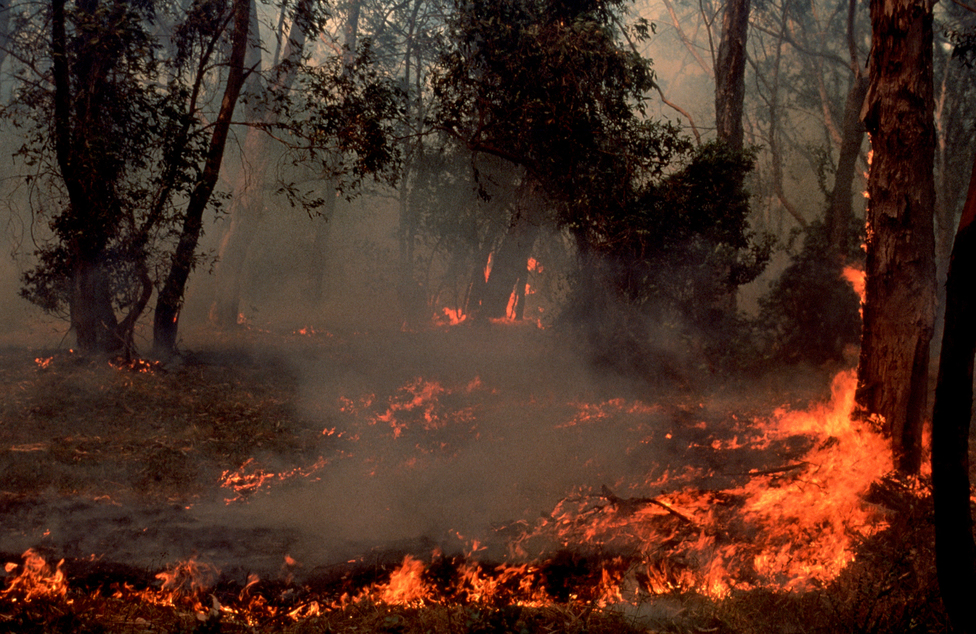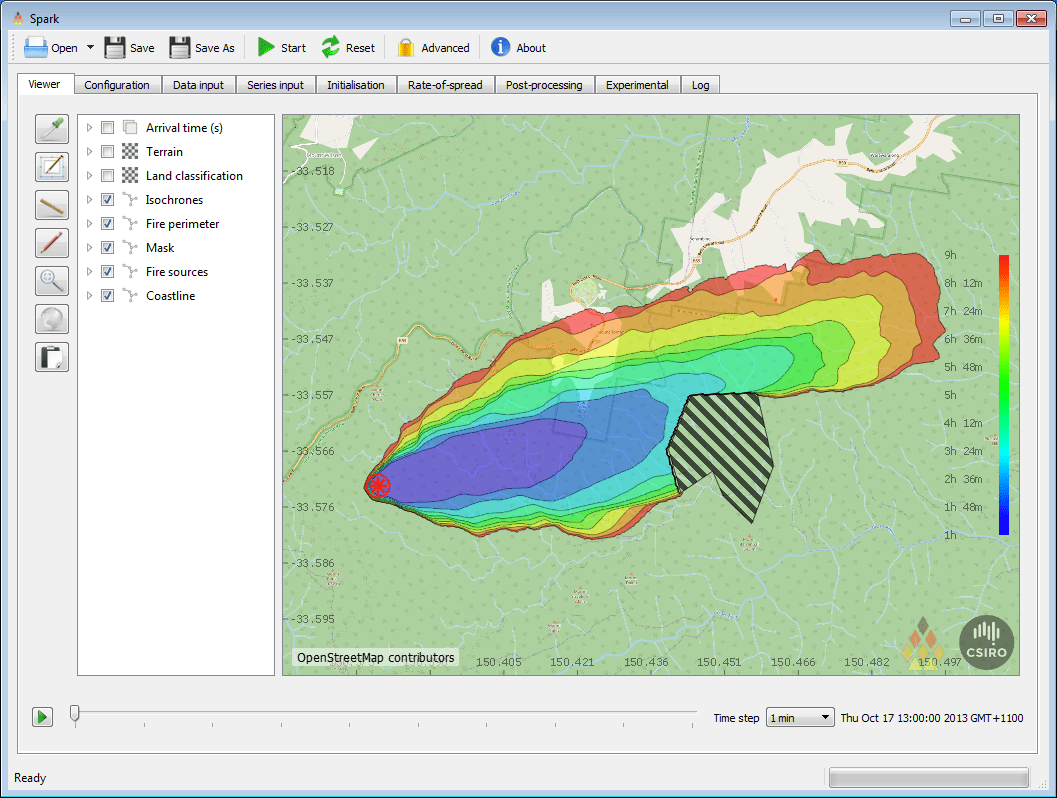
We expect to see more frequent extreme bushfires in Australia. So how can we plan ahead?
Australia’s bushfire crisis has caused untold damage to people, property, flora and fauna. Fires are a natural occurrence in Australia. But many factors including a warming climate and drought have made this bushfire season particularly devastating.
As we adapt to more severe weather events in a changing climate, we need a better understanding of how bushfires start and spread. That way we can plan ahead, mitigate risk and support the brave firefighters risking their lives to protect our homes.
Drawing on our knowledge of fire behaviour and Data61’s simulation science and artificial intelligence expertise, we developed Spark. Spark is a tool for fire prediction and analysis.
Bright spark: predicting the unpredictable
Bushfires are complex processes and many elements can influence their behaviour. From fine-scale variations in the weather to topography and distribution of fuel. As a result, it’s hard to accurately determine how a fire might spread.
Fighting and controlling fires is difficult for emergency services due to this uncertainty. Even deciding the best evacuation routes in uncertain fire conditions can be challenging.
Spark relies on weather data like air temperature, humidity, wind speed and wind direction. It also integrates geographic information including land slope, vegetation and unburnable areas such as roads and bodies of water.
Dr Mahesh Prakash leads the natural systems modelling group in our Data61 team. He said with these inputs, Spark can run fire predictions for any given location.
“Spark provides valuable information to emergency management authorities. This includes the rate at which a fire spreads, the direction it spreads, as well as the locations it will affect,” Mahesh said.
“Such predictions play a critical role at the frontline, supporting decisions on where best to deploy often limited resources. Bushfire researchers can also use it to understand different types of fire models.”

Spark takes current knowledge of fire behaviour and combines it with simulation science and artificial intelligence to predict bushfire spread.
Building our bushfire resilience at home and abroad
Spark is one of many important tools available. It is being used by emergency management agencies around Australia including fire services in New South Wales, Queensland, South Australia and Tasmania. From 2021, it will form the basis of Spark Operational, a nationally consistent bushfire modelling and prediction tool that will be used by fire and emergency services across Australia, in partnership with the National Council for Fire and Emergency Services.
But, it’s not just Australia that has to contend with increasingly severe wildfires. Chile, the Amazon Rainforest, Sibera and California have recently experienced some of the worst wildfires in history.
Mahesh and his team have worked with Arauco in Chile, one of the largest suppliers of forest and related products in the Southern Hemisphere. Together we were able to provide integrated fire and data science tools to understand and respond to wildfire threats.
Additionally in California, we are evaluating the use of Spark’s suitability for the vegetation and weather conditions in the US. This is being done in collaboration with San Jose State University and some start-ups at the forefront of applying wildfire research in California.
Preparing for future bushfire seasons
As we expect more intense bushfire seasons, Spark and its allied products can support evacuation route planning and the timely issuing of warnings. It can predict the risk to critical infrastructure and reconstruct historical fire events so we can learn from them.
Importantly, Spark can also help identify optimal sites for hazard reduction. For example, planned back burning operations to reduce fuel loads and therefore fire risk. Spark Operational, once fully developed, will be able to be combined with climate and vegetation models to estimate fire-based risks in future as a result of climate change.
Spark is available for free for emergency management agencies in Australia. Phase one of Spark Operational’s implementation commenced in January 2021, with further developments ensuring it will become fully operational over the next three years.


12th February 2020 at 6:06 pm
‘Twill be important to realise that the Down Under Australia 2019-2020
1. holocaust of bushfires
and
2. deluge of floods
are happening at a time when Human$ are
1. planning to massively drill for oil in Great Australian Bight in Southern Ocean
2. actively increasing the in-situ leach-mining of uranium at Honeymoon mine site in South Australia
3. dumping all ill-manner of nuclear waste at Kimba on Eyre Peninsula in South Australia
3. attacking all agriculture with genetic modification of foodstuffs in South Australia
How could these be related :
Well subjectively by the reactions by the Intelligencs of Nature to Human Pollution, Greed and Destruction of Planet Earth.
References:
Ivan T. Sanderson : zoologist of previous century who pointed out that during the past several hundred MILLIONS of years of life in the oceans, there have PROBABLY been creatures to evolve far past the human mark in time and space, to acquire psychokinetic skills necessary to defend the Oceans from human and any other land-based life form destruction and disturbance.
Ted Owens : ACTUAL UFO (OVNI) contact who proved beyond question of a doubt that UFO Space Intelligences could direct ANY phenomana at will to defend Earth from human miscreants.
Examples:
intelligence.atspace.com How to Contact Space People by Ted Owens (1969)
Flying Saucer Intelligences Speak by Ted Owens (1969)
Under $urveillance/Intimidation by
$CIA$KGB$ $FBI$FSB$ $NSA$NKVD$ STASIO (STASI ASIO)
$MIB$MI6$
the past 50 years for
Pro Peace Anti War
Pro Environment Anti Nuclear
sentiments and activities.
17th January 2020 at 4:31 pm
Excellent